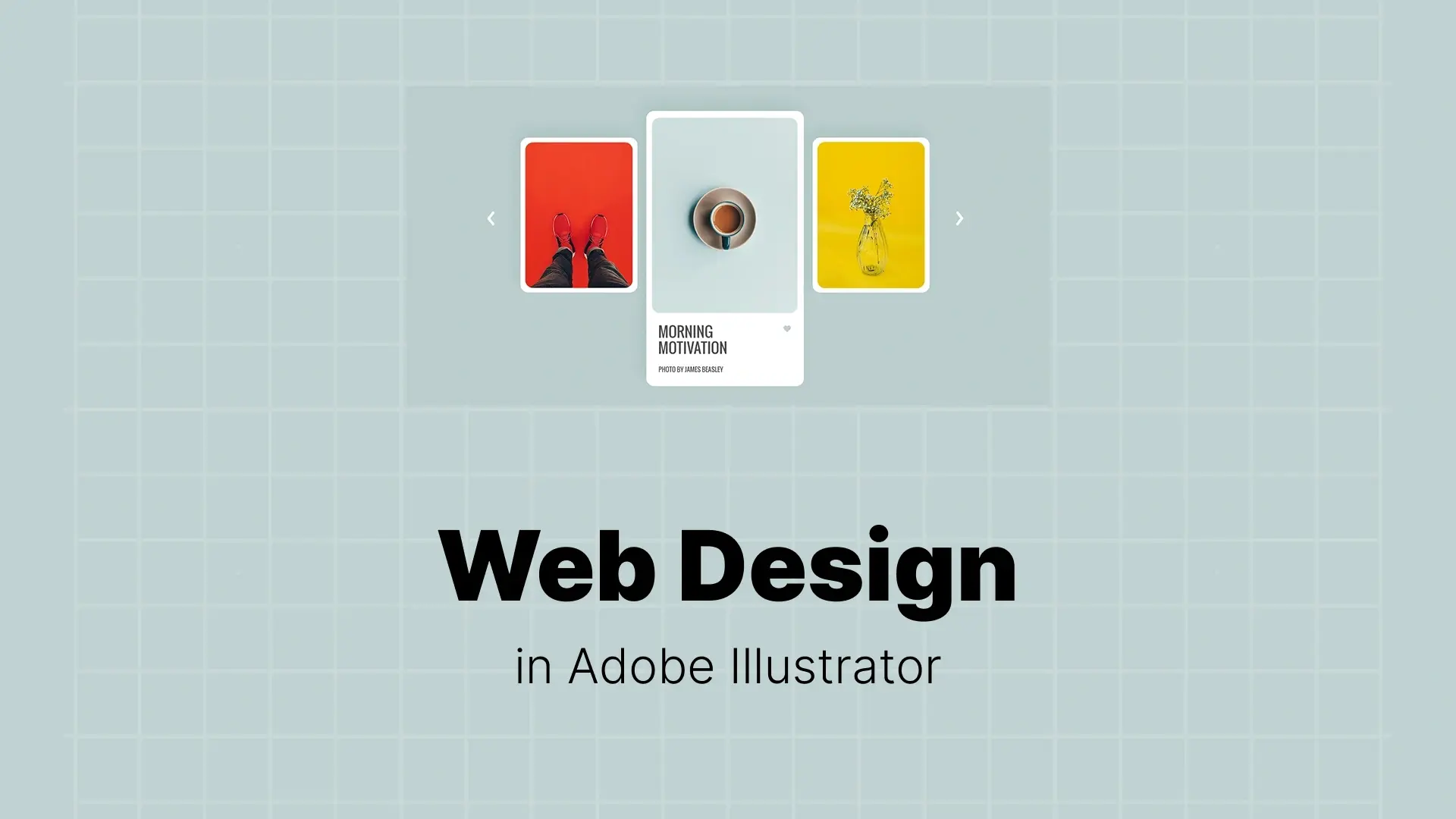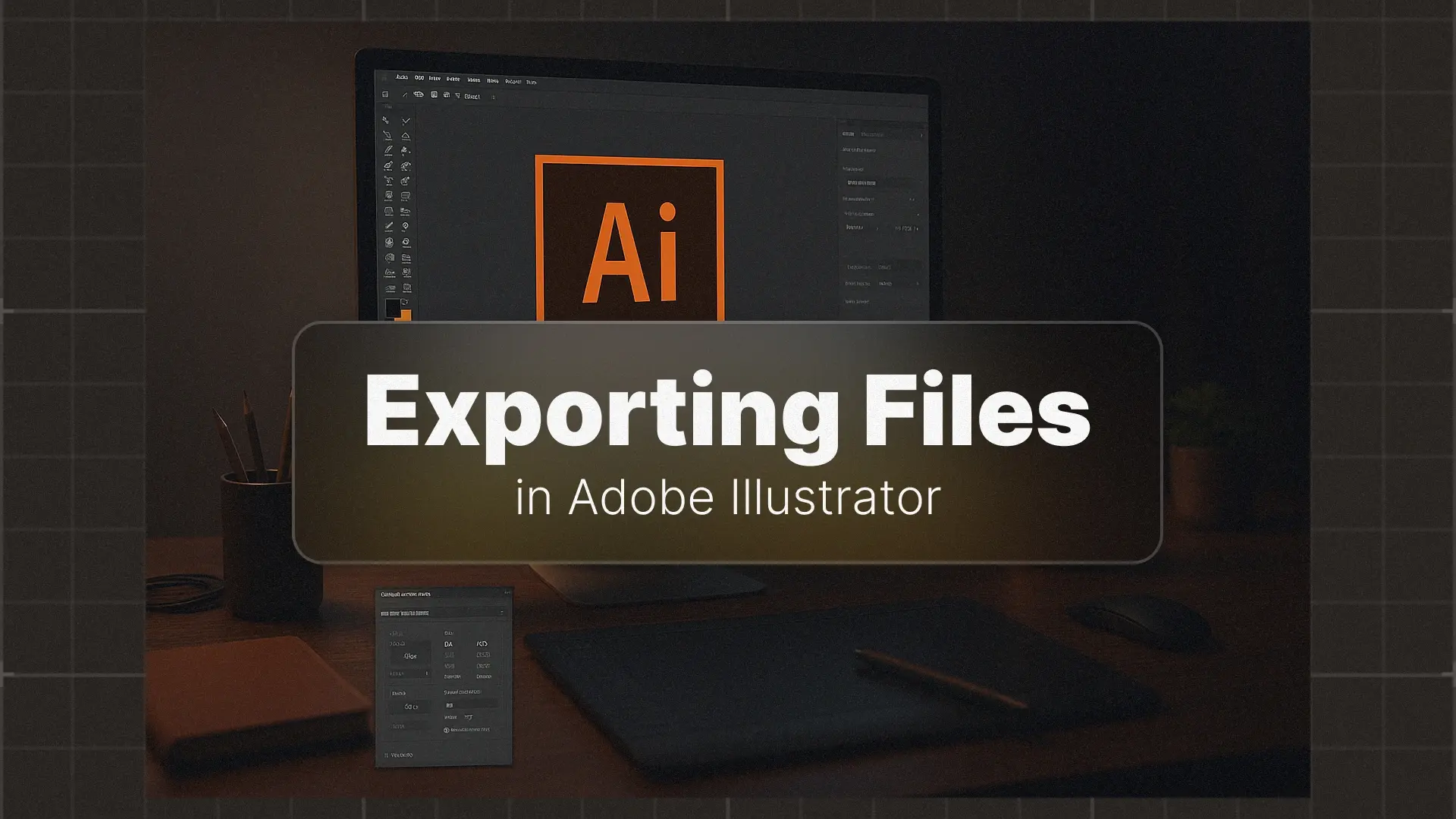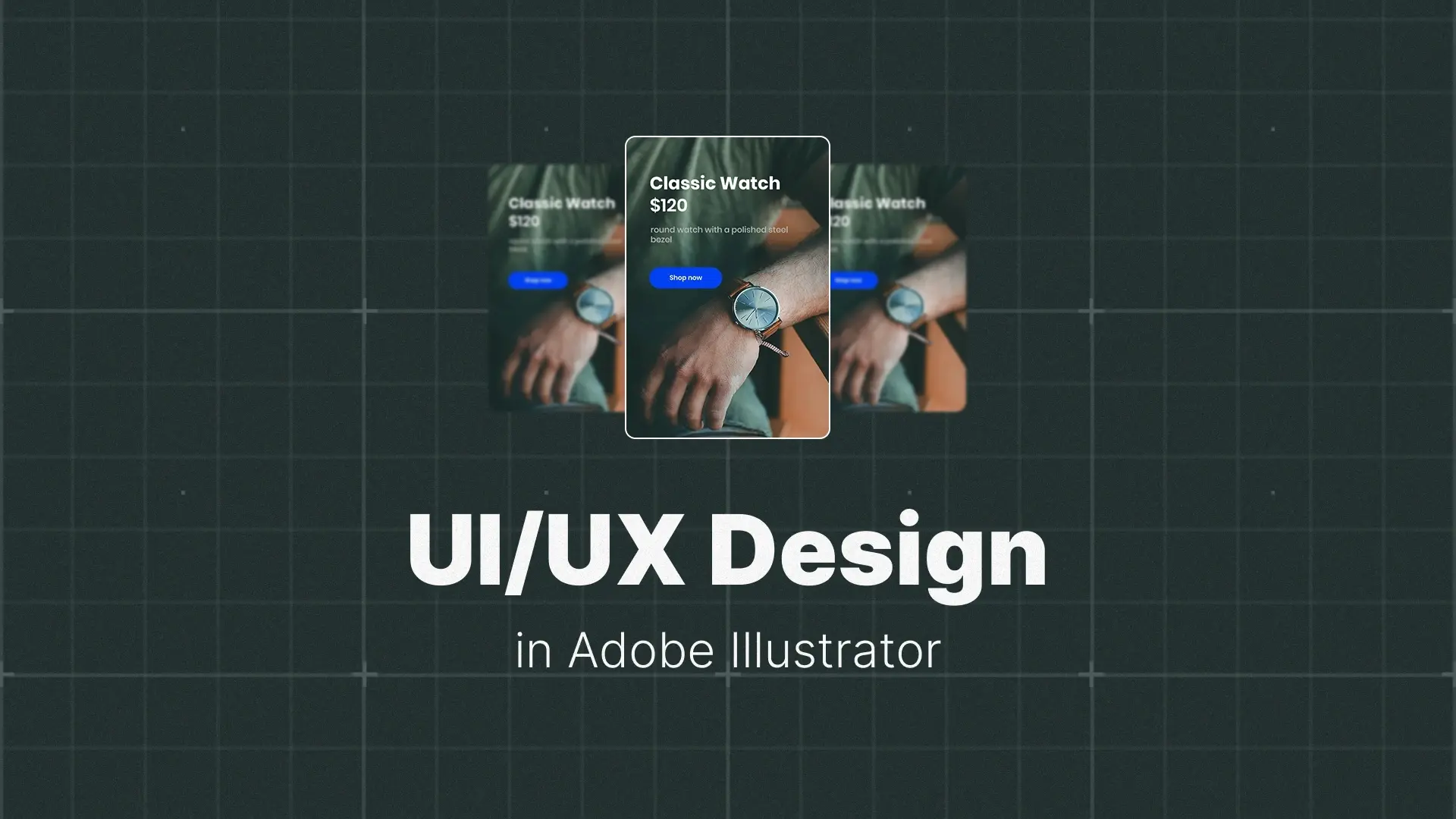Using Adobe Illustrator for Web Design (A Modern Workflow)

Illustrator for Web
In this guide, we’ll walk through a modern workflow for web design in Illustrator. You’ll learn how to set up a pixel-perfect workspace, create clean UI designs from wireframe to mockup, and export optimized assets for a seamless developer handoff.
Professional Illustrator Templates
The Big Question: Should You Use Illustrator for Web Design?
Illustrator’s Strengths
- Vector Power – Everything you create is infinitely scalable, meaning no quality loss when resizing logos, icons, and web graphics.
- Creative Freedom – Illustrator offers unmatched flexibility for creating unique visual styles, from modern flat UI elements to complex illustrations.
- Integration – Works seamlessly with Photoshop for image editing and After Effects for motion graphics—ideal if your website mockup will have animations.
Illustrator vs. Figma / Sketch
Let’s be honest—if your project requires full prototyping, live collaboration, and developer-ready specifications, tools like Figma, or Sketch are better suited.
However, Illustrator shines when:
- You need pixel-perfect icons, illustrations, or a custom web template to import into those tools.
- You’re designing single-page websites, marketing landing pages, or highly visual hero sections.
If your goal is to create polished graphics before assembling them in a UI tool, Illustrator remains unmatched. Plus, ready-made Illustrator templates can speed up your workflow.
The Essential Setup: A Pixel-Perfect Workspace
How to Set Up a Pixel Grid
Before starting, set your document Units to Pixels (File > Document Setup) and turn on Pixel Preview (View > Pixel Preview). This ensures your web design in Illustrator matches how it will look in a browser.
Aligning Art to the Pixel Grid
In the Transform panel, check Align to Pixel Grid for all objects. This prevents blurry edges when exporting. It’s a must for sharp icons and UI components.
Creating a Responsive Web Layout
Use multiple artboards for different breakpoints—mobile, tablet, and desktop. This allows you to design responsive layouts side-by-side in one file.
The Design Workflow: From Wireframe to Mockup
How to Create a Wireframe in Illustrator
Start with a grayscale wireframe using rectangles for content blocks, placeholder images, and text areas. This keeps your focus on layout and hierarchy without getting distracted by colors or details.
Building a UI Kit
Create reusable components—buttons, form fields, text styles, and color swatches. Store them in the Symbols panel for easy updates across your design.
For a jumpstart, check out ready-made Illustrator templates for web design that can speed up your workflow.
Designing the Final Website Mockup
Once your wireframe is approved, replace placeholders with high-quality images, choose a cohesive color palette, and apply typography that fits your brand. This is where your site starts looking like the final product.
The Final Step: Exporting Assets for Developers
Using the Asset Export Panel
Open Window > Asset Export, drag in your icons, buttons, or illustrations, and set them to export in multiple formats at once—SVG for scalable graphics and PNG for raster versions.
SVG Export: The Best Format for Web Graphics
SVGs are lightweight, scalable, and render perfectly on any device. They’re the best choice for logos, icons, and UI elements.
Exporting JPGs and PNGs
For complex images or background textures, use File > Export > Export for Screens. Adjust the resolution (72 PPI for web) and choose PNG for transparency or JPG for smaller file sizes.
If you need ready-to-use export-friendly designs, you can grab high-quality Illustrator templates that follow these best practices.
Conclusion
If you’re looking to push your skills further, try designing a fictional landing page and optimizing it for multiple screen sizes. And for deeper Illustrator mastery, check out our comprehensive guide for beginners and beyond.







